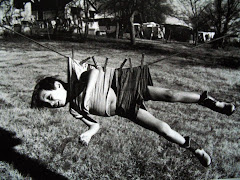
Earlier this week, while showcasing Leader of the Pack, we talked about the musical genre of "death discs". There's no better example than Tell Laura I Love Her. Singer Ray Peterson had an American hit with the tune in 1960, while Ricky Valence took it to #1 in the UK later the same year.
Ray Peterson's claim to fame prior to 1960 was a little song called The Wonder of You, later made popular by Elvis. Following "Laura" Peterson had something of a hit with Corrina, Corrina but his popularity never really matched that associated with his death disc.
Here' Sha-Na-Na takes "Laura" for a spin...
Laura and Tommy were lovers
He wanted to give her everything
Flowers, presents, but most of all, a wedding ring
He saw a sign for a stock car race
A thousand dollar prize it read
He couldn't get Laura on the phone
So to her mother, Tommy said
Tell Laura I love her
Tell Laura I need her
Tell Laura I may be late
I've something to do, that cannot wait
He drove his car to the racing grounds
He was the youngest driver there
The crowed roared as they started the race
Around the track they drove at a deadly pace
No one knows what happened that day
Or how his car overturned in flames
But as they pulled him from the twisted wreck
With his dying breath, they heard him say
Tell Laura I love her
Tell Laura I need her
Tell Laura not to cry
My love for her will never die
Now in the chapel where Laura prays
For her poor Tommy, who passed away
It was just for Laura he lived and died
Alone in the chapel she can hear him cry
Laura and Tommy were lovers
He wanted to give her everything
Flowers, presents, but most of all, a wedding ring
He saw a sign for a stock car race
A thousand dollar prize it read
He couldn't get Laura on the phone
So to her mother, Tommy said
Tell Laura I love her
Tell Laura I need her
Tell Laura I may be late
I've something to do, that cannot wait
He drove his car to the racing grounds
He was the youngest driver there
The crowed roared as they started the race
Around the track they drove at a deadly pace
No one knows what happened that day
Or how his car overturned in flames
But as they pulled him from the twisted wreck
With his dying breath, they heard him say
Tell Laura I love her
Tell Laura I need her
Tell Laura not to cry
My love for her will never die
Now in the chapel where Laura prays
For her poor Tommy, who passed away
It was just for Laura he lived and died
Alone in the chapel she can hear him cry






































































